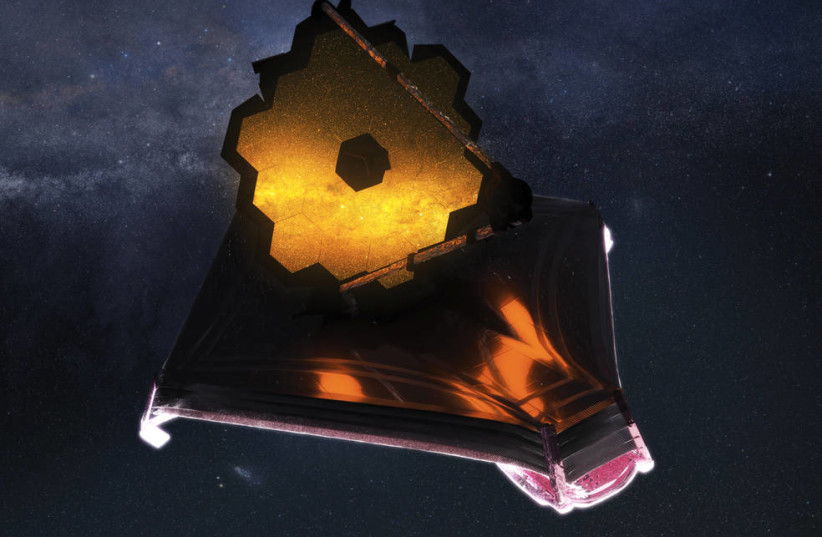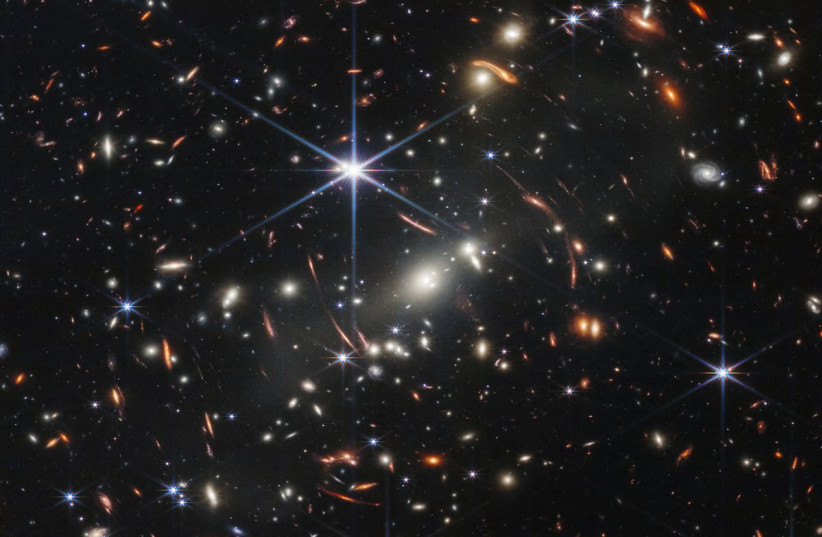NASA's James Webb Space Telescope first images unveiled
The state-of-the-art instruments on the $9 billion James Webb Space Telescope will help us see more of the vast reaches of the universe than ever before.

The first images of NASA's James Webb Space Telescope are being unveiled in a long-awaited showcase of just what the US space agency's newest flagship space telescope is capable of, ever since it was launched back on December 25.
This, in turn, follows the sneak peek revealed by US President Joe Biden Monday evening, when he unveiled a photo of a galaxy cluster revealing the single most detailed glimpse of the early universe.
The image depicted thousands of galaxies, as part of galaxy cluster SMACS 0723, one of NASA's five targets for its James Webb Space Telescope showcase debut, as it would have appeared 4.6 billion years ago.
First Images From the James Webb Space Telescope (Official NASA Broadcast)
In addition, this cluster was able to magnify distant galaxies behind it because it can act as a gravitational lens, meaning its massive gravitational field is able to bend the light from galaxies behind it to magnify how it looks.
Also included in this image was a very faint spot of light that, according to NASA, is far older - dating back at least 13 billion years.

The first full-color image from NASA's James Webb Space Telescope, a revolutionary apparatus designed to peer through the cosmos to the dawn of the universe, shows the galaxy cluster SMACS 0723, known as Webb’s First Deep Field, in a composite made from images at different wavelengths. (credit: NASA/HANDOUT VIA REUTER
For context, the Big Bang, the theoretical birth of the universe itself, was thought to have been 13.8 billion years ago.
"These images are going to remind the world that America can do big things, and remind the American people – especially our children – that there’s nothing beyond our capacity," Biden said at the time. "We can see possibilities no one has ever seen before. We can go places no one has ever gone before."
"These images are going to remind the world that America can do big things, and remind the American people – especially our children – that there’s nothing beyond our capacity. We can see possibilities no one has ever seen before. We can go places no one has ever gone before."
US President Joe Biden
But this is just the preview — in fact, the area depicted in the image is quite small on a cosmic scale. To illustrate, it is comparable to a grain of sand held at arm's length by someone on the ground - that's how small it is compared to the vast expanse of the universe, but with the James Webb Space Telescope, we will still be able to see more of the universe than ever before.
What can the James Webb Space Telescope do?
The massive $9 billion telescope is the most state-of-the-art space telescope around and are equipped with incredibly sensitive instruments and infrared resolution that far exceed the capabilities of other space telescopes, especially NASA's Hubble Space Telescope.
In particular, the image shared by Biden was taken via the Near-Infrared Camera (NIRCam), a specialized infrared camera that is able to suppress starlight. This is important, as starlight often obscures other objects and structures in space, especially exoplanets. With this camera, it is possible to increase contrast and get a wider view of the cosmos not obscured by starlight.
But it can do more than that. The above-mentioned practice is what is called coronagraphy. In addition to that, NIRCam is capable of spectroscopy, which can separate light into individual colors to view every object's colors in the area, or in individual objects. And these have multiple modes and applications.
In total, the James Webb Space Telescope comes equipped with four instruments, with the other three being the Mid-Infrared Instrument (MIRI), the Near-Infrared Spectrograph (NIRSpec) and the Near-Infrared Imager and Slitless Spectrograph/Fine Guidance Sensor (NIRISS/FGS) with 17 different "modes" of operation.
WASP-96 b: Water vapor on an exoplanet
NASA presented the first spectrographic analysis of WASP-96 b, a massive gas giant exoplanet around the size of Jupiter but also half the mass of it.
The spectrographic data was used to find the elements on the planet, and the NASA presenters noted the telltale presence of water vapor in the atmosphere, specifically the fact that there would be "clouds and haze" on the planet's surface.
This does not mean there would be liquid water, though. In fact, WASP-96 b is far closer to its star than Mercury is to the Sun. It's so close that the water would be more like steam.
This was all possible because thanks to the James Webb Space Telescope, they now have access to more light wavelengths than they ever had before.
Southern Ring Nebula: The first image of a dying star
The image of the Southern Ring Nebula highlighted with infrared depicts the dying star surrounded by the gas cloud, leaving the NASA presenters briefly speechless.
Two images were displayed side by side, one of which used more specialized infrared.
NASA astronomer Karl Gordon emphasized the bright color was caused by ionized gas creating what looks like a massive blue bubble around the dying star. Rays can also be seen outside, allowed out by holes in the inner nebula letting it light up like patchy clouds.
With infrared, though, the color looks far more orange and red. The inner region is still ionized gas, but because of the MIRI-detected wavelengths, the color changes.
But the most notable aspect is the second star inside of it. NASA knew it was a binary star system beforehand, but they were never able to see the second star. But now, thanks to MIRI, it's possible to actually see in such detail that the second star is visible.
And this will include the other targets listed by NASA last week. These include The Carina Nebula, a large and bright nebula home to many stars and essentially functions as a sort of nursery where stars form; Stephan’s Quintet, a galaxy group located in the Pegasus constellation that was the first compact galaxy group ever found; the Southern Ring Nebula, an expanding gas cloud around a dying star; and the giant exoplanet gas giant WASP-96 b.
Stephan's Quintet: A cosmic dance
The image shown by NASA and the ESA displayed five galaxies known as Stephan's Quintet, a galaxy group located in the Pegasus constellation that was the first compact galaxy group ever found, each one containing hundreds of billions of stars.
These stars are locked in a "cosmic dance" so close together, that two of them are even in the process of merging.
NASA's Hubble Space Telescope has taken images of Stephan's Quintet, but the level of detail on James Webb is far superior, able to see through the dust and have better insight into the natural evolution of galaxies in the universe's earliest days.
The Carina Nebula: Birthplace of the stars
The Carina Nebula is a stellar nursery of sorts where star systems are formed. Here, it's possible to see so much more detail. There are bubbles, cavities and jets in the nebula, with hundreds of stars that have never been seen before.
There are also some things that they have no idea what they are. "Like look at this," James Webb Space Telescope scientist Amber Straugh said gesturing at an area. "What's going on over here?"
The imaging highlights the birth cycle of stars and planets, and as Straugh highlighted, nebulae like this are likely how our solar system was formed as well.
And more discoveries like this are waiting thanks to the James Webb Space Telescope.
As NASA administrator James Nelson summed it up: "In the words of Carl Sagan, somewhere, something incredible is waiting to be known. I think those words are becoming reality."
Reuters contributed to this report.


No comments:
Post a Comment